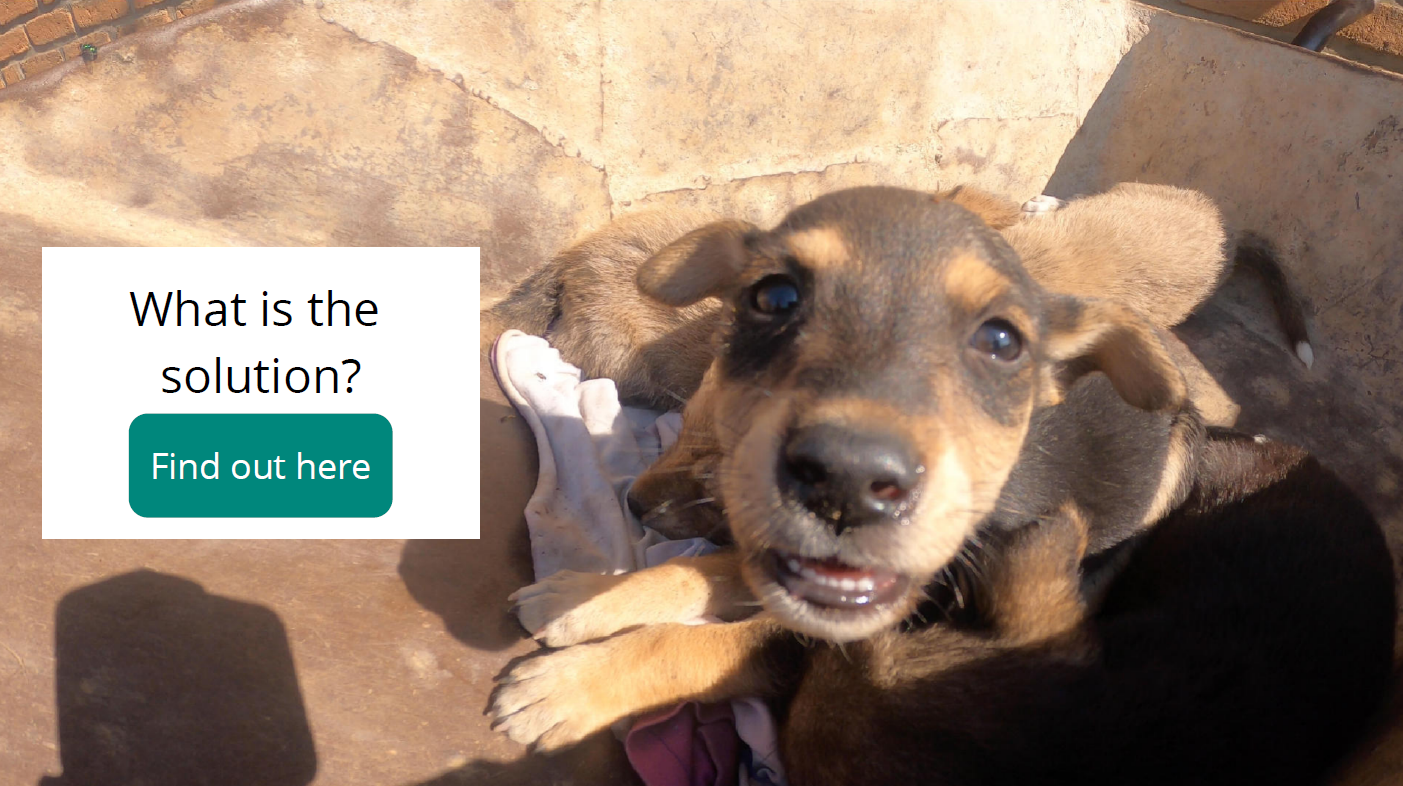What is Rabies?
Rabies is a virus that affects the central nervous system and is usually transmitted via saliva by a bite or scratch1. Although rabies can affect wild animals as well, 99% of human infections stem from the dog population1. Symptoms will generally take a few weeks to occur but once evident will eventually result in death. There are two forms of the disease, furious and paralytic. The paralytic form tends to run a slower course, but both will sadly end in the same circumstance.
-
What are the clinical signs?
There are two forms of the disease, furious and paralytic rabies1. Patients with the furious form will show signs such as fear of water and hyperactivity with death typically occurring within a few days from cardio-respiratory arrest. Patients with the paralytic form follow a slower path with patients suffering gradual paralysis, coma and eventually death.
Transmission and treatment
Transmission generally occurs via saliva, through bites and scratches from affected animals. In people who are known to have been exposed, vaccination can be used as part of the treatment if administered in time. Unfortunately, in the areas most commonly affected by rabies, cost and access to the human vaccine can make post exposure treatment incredibly difficult. Therefore managing the disease within the animal population is the most effective way of preventing people from dying. 99% of rabies cases stem from dogs1, and because of their close interactions, approximately 40% of exposure to rabies is in children under 15 years of age2. Vaccination of the canine population can remove the reservoir of disease and cut it off at the source.
It is reported that over 59,000 people die from rabies each year, with over 95% of rabies cases appearing across India and Africa1.
Community and impact
The tragic loss of life is not the only burden that these communities carry from rabies. The World Health Organisation (WHO) estimates show the impact of rabies each year to be in the region of $8.6 billion, and with 80% of cases being in rural areas this burden is often falling on those with limited resources2. The WHO estimates that post exposure treatment can cost up to $108 per person , which is a heavy economic burden for some of the most affected communities2.
References
1) "Rabies Fact Sheet". World Health Organization. February 2018. Retrieved 16 February 2022. - http://www.who.int/en/news-room/fact-sheets/detail/rabies
2) "United against rabies forum: Zero by 30: One Health in action". World Health Organization. March 2021. Retrieved 16 February 2022. - http://www.who.int/en/news-room/fact-sheets/detail/rabies






